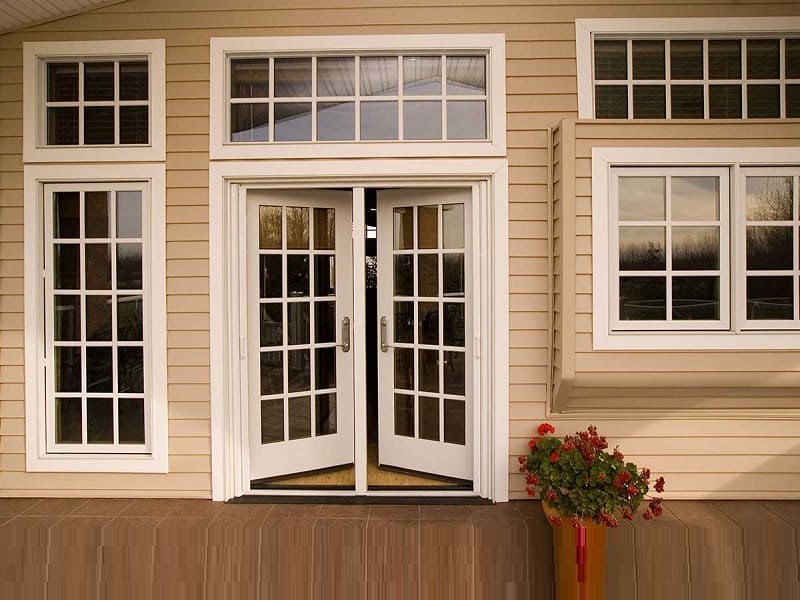Introduction
Every house has its own personality—some bold and contemporary, others timeless and traditional. While roofing and siding often dominate discussions around style, it’s the windows and doors that give a home its expression. Their shapes, sizes, and details serve as defining features that either enhance or conflict with architectural design.
Choosing the right window installation or door installation isn’t just a technical task—it’s a design decision that can make or break the overall look of your home. Whether you’re planning a renovation or working on new construction, aligning your selections with your home’s architectural roots is essential.
Let’s explore how style, proportion, and symmetry all come together to create harmony between structure and design—and how your choices in window replacement or door replacement can elevate the entire aesthetic of your space.
Colonial and Georgian Homes: Symmetry and Simplicity
These styles are known for their balanced proportions and classic elegance. Typically featuring a rectangular footprint and a centered front door, Colonial and Georgian homes rely on symmetry to make a visual impact.
Best Match:
- Double-hung windows with multiple panes (commonly six-over-six or nine-over-nine grids)
- A paneled front door with sidelights or a fanlight above
- Subtle shutters that mirror the window’s vertical orientation
Grilles between glass panes add authenticity while keeping cleaning and maintenance simple. If replacing old units, staying true to the vertical emphasis of the original architecture maintains curb appeal and consistency.
Modern and Contemporary Homes: Clean Lines and Open Spaces
In contrast to traditional designs, modern homes prioritize openness, natural light, and minimalist forms. Large expanses of glass are common, making windows and doors a dominant feature in the facade.
Best Match:
- Fixed picture windows and casement windows with slim frames
- Sliding or pivot-style glass doors
- Frameless or low-profile hardware for an understated finish
For these homes, less is more. Frames should be thin, and lines should be clean. Window placement is often asymmetrical, used strategically to play with light and space. For homeowners considering window installation in a modern home, energy-efficient glass with a slight tint can reduce glare while maintaining visual flow.
Craftsman and Bungalow Homes: Detail and Texture
With exposed beams, overhanging eaves, and handcrafted features, Craftsman homes showcase warmth and artistry. Windows and doors in this style are designed to enhance these qualities with thoughtful detailing.
Best Match:
- Double-hung or casement windows with divided light in the upper sash only
- Stained wood or solid-colored doors with vertical panels and glass inserts
- Tapered or square columns that echo the doorframe design
Craftsman-style homes often benefit from custom touches, such as decorative grille patterns or bold-colored doors. Window replacements in this category should preserve wood textures and avoid overly modern frame profiles to stay authentic.
Mediterranean and Spanish Revival: Arches and Character
Inspired by coastal European architecture, these homes favor rounded shapes, textured stucco exteriors, and wrought-iron accents. Their charm lies in softness, with curves and ornamentation setting them apart.
Best Match:
- Arched windows or arched transoms over rectangular units
- Wood-look doors with decorative hardware, often featuring iron or brass
- Warm earth tones or rustic finishes to reflect natural materials
During door replacement for this style, choosing a material that mimics wood grain while resisting weather damage is a practical yet visually aligned option. Decorative grilles and textured glass also elevate authenticity.
Mid-Century Modern: Function Meets Flair
Mid-century homes are known for flat planes, integration with nature, and floor-to-ceiling glass. They favor geometric forms and seamless indoor-outdoor transitions.
Best Match:
- Clerestory windows and horizontal sliders
- Flush doors with minimal trim, often with rectangular glass panels
- Large gliding glass doors to connect interiors with patios or decks
These homes benefit from strategic light placement. Windows often stretch across long walls, drawing the eye horizontally. Frames should be thin and uniform to maintain the architectural language. When replacing older windows, consider aluminum or fiberglass frames that preserve the home’s mid-century roots while boosting energy efficiency.
Farmhouse and Country Styles: Comfort and Contrast
Blending rustic charm with practicality, modern farmhouse designs are rooted in simplicity. White clapboard exteriors, gabled roofs, and large porches are common features.
Best Match:
- Tall double-hung windows with black or dark frames
- Front doors with glass panels or crossbuck patterns
- Symmetrical window placement and wide trim for definition
Contrasting colors (like black windows on white walls) give the farmhouse look its modern edge. Door installation here often focuses on charm—like Dutch doors, barn-style sliders, or doors with upper glass to let in sunlight.
Victorian and Gothic Revival: Drama and Ornamentation
Victorian homes are all about drama—from intricate trim to complex rooflines. Windows and doors often feature elaborate shapes and finishes.
Best Match:
- Bay or bow windows with decorative trim
- Stained glass or multi-pane casement windows
- Ornate wooden doors with carvings or glass inlays
During window replacement for older Victorian homes, it’s important to retain the ornamental nature while upgrading insulation and functionality. Even modern materials can be crafted with historical character in mind.
Making Practical Style Choices
Matching form with function is essential. For example:
- If your climate is harsh, consider low-maintenance alternatives like fiberglass that can mimic wood without the upkeep.
- For security, opt for multi-point locking systems in larger glass doors, especially those installed in secluded areas.
- To increase natural light without compromising energy efficiency, look for high-performance glazing options.
When in doubt, selecting timeless window and door shapes—those that respect the proportions of your home—ensures a look that will age gracefully.
Blending Styles Thoughtfully
Sometimes, architectural styles overlap. Transitional homes often feature a combination of traditional and modern elements. In such cases, blending window and door styles from each era—like classic frames with contemporary glass options—can result in a cohesive yet current design.
Clean Cut Windows & Doors has worked with a wide range of homes, and understanding how to blend styles while maintaining structure and proportion is part of creating a successful installation outcome.
Conclusion
Windows and doors aren’t just functional components—they’re visual anchors that define how your home is perceived. By matching style with structure, and choosing designs that complement your home’s architecture, you’re investing in harmony, resale value, and long-term satisfaction.
Whether you’re planning a full renovation or simply updating a few key pieces, make selections that respect your home’s story. With thoughtful window installation and intentional door replacement, every detail adds up to a stronger, more stylish whole.







